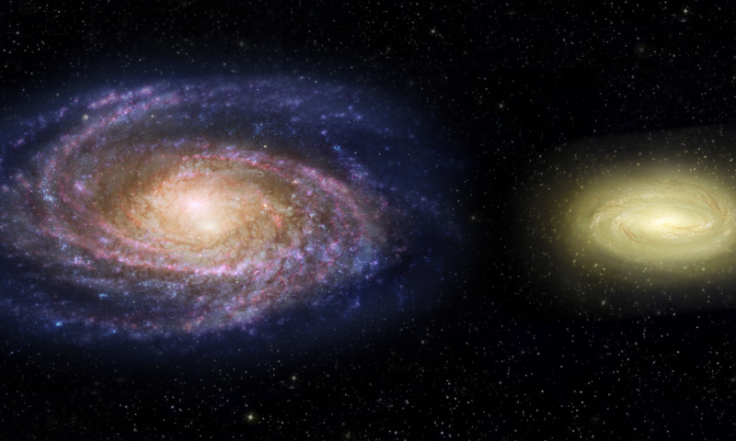Massive dead disk galaxy observed for the first time challenges ideas of galaxy evolution
The galaxy stopped forming stars a few billion years after the big bang.

Scientists have discovered the first example of a massive, fast-spinning, disk-shaped galaxy that stopped making stars not long after the big bang. The discovery may lead us to rethink our theories of how galaxies form and evolve.
The team led by scientists from the University of Copenhagen identified the galaxy with the help of Nasa's Hubble Space Telescope.
The astronomers had expected to see a chaotic ball of stars that formed through galaxies merging together, but instead what they identified was a massive disk-shaped galaxy.
Known as MACS2129-1, it appears to be three times as massive as the Milky Way although it is only half the size.
Further measurements made with the European Southern Observatory's Very Large Telescope (VLT) suggested that the disk galaxy is spinning more than twice as fast as the Milky Way.
These 'dead' galaxies which have stopped making stars evolve into the large elliptical galaxies that we see today in the Universe, but how they do so is still unknown. It is hoped that the discovery, now published in the journal Nature, may provide an answer to this puzzle.
Looking at the shape and structure of this distant galaxy, the scientists have shown that early "dead" disk galaxies must have gone through major makeovers to evolve into the shape of today's large, elliptical galaxies. They not only change their structures, but also the motions of their stars.
"This new insight may force us to rethink the whole cosmological context of how galaxies burn out early on and evolve into local elliptical-shaped galaxies," said study leader Sune Toft of the Dark Cosmology Center at the Niels Bohr Institute, University of Copenhagen, Denmark.
"Perhaps we have been blind to the fact that early "dead" galaxies could in fact be disks, simply because we haven't been able to resolve them."
Why this distant galaxy stopped making stars a few billion years after the big bang is still unclear but the scientists say different hypotheses are possible. It may be the consequence of an active galactic nucleus, where energy is coming out from a supermassive black hole. Indeed, this energy can inhibit star formation by heating the gas or expelling it from the galaxy.
However, it may also be the result of the cold gas streaming onto the galaxy being rapidly compressed and heated up, preventing it from cooling down into star-forming clouds in the galaxy's centre.
© Copyright IBTimes 2025. All rights reserved.






















